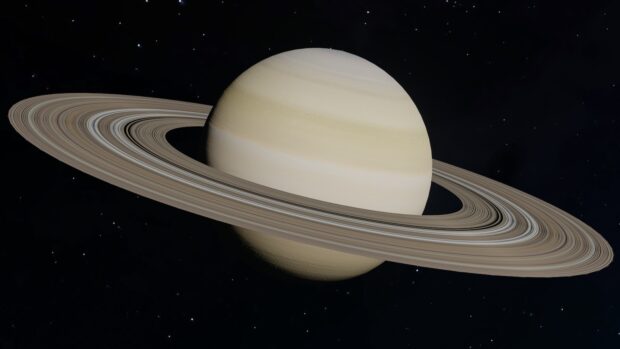Scientists have made an exciting discovery on one of Saturn’s moons, Enceladus. Using data from NASA’s Cassini spacecraft, which observed Saturn and its moons from 2004 to 2017, researchers have detected phosphorus in Enceladus’ oceans. This marks the first time phosphorus has been found in an ocean outside of Earth.
For years, scientists have been searching for signs of life beyond our solar system. The discovery of key building blocks of life, like phosphorus, brings us closer to uncovering the existence of extraterrestrial life. This article will delve into the details of this groundbreaking finding and explore whether it provides definitive proof of life in outer space.
Saturn’s moon Enceladus has long been considered a promising location to search for alien life. However, scientists couldn’t physically visit the moon, so they relied on the data collected by NASA’s Cassini mission. The mission revealed the presence of minerals and organic compounds necessary for life. Previous studies had detected sodium, chlorine, and carbonate compounds, and the latest research adds phosphorus to the list. The findings were published in the journal Nature.
The scientists found high concentrations of sodium phosphates in Enceladus’ ice grains. These are molecules that combine oxygen, hydrogen, and phosphorus. Dr. Fabian Klenner, one of the study’s co-authors, stated that the discovery of such significant phosphate concentrations fulfills one of the crucial requirements for establishing whether celestial bodies can support life.
Saturn’s ocean is located beneath an ice shell, but scientists believe there are hydrothermal environments on the seafloor that keep the ocean warm. Dr. Frank Postberg, the lead author of the study, highlighted the presence of dissolved phosphates in Enceladus’ ocean, which are readily available for potential life formation. He also mentioned that phosphates on Earth and elsewhere in the solar system are typically locked up in rocky minerals, but on Enceladus, they exist in large quantities as salts.
Dr. Postberg and his team used a model to estimate the phosphate concentrations in Enceladus’ salty ocean, and they believe they are 100 to 1,000 times higher than Earth’s oceans. Co-author Christopher Glein remarked that this abundance of phosphorus could potentially support life in Enceladus’ ocean, calling it a stunning discovery for astrobiology.
While this finding significantly increases the likelihood of extraterrestrial life, the scientists emphasize that they have not detected life in outer space. Having the necessary ingredients for life is essential but not sufficient for supporting life in an extraterrestrial environment, according to Glein. Integrating the discovery of phosphorus into the habitability potential of other icy ocean worlds throughout the solar system is an exciting prospect.
NASA deliberately ended the Cassini mission by burning the spacecraft in Saturn’s atmosphere in 2017. However, it revolutionized our understanding of ocean worlds in outer space and remains our best tool for investigating life beyond Earth. Linda Spilker, a NASA planetary scientist, notes that the discovery of phosphorus in Enceladus’ subsurface ocean sets the stage for exploring the habitability potential of other icy ocean worlds throughout the solar system. The legacy of Cassini will continue to inspire future missions that may eventually answer the question of whether there is life beyond Earth.
In conclusion, scientists have discovered phosphorus on Saturn’s moon Enceladus, increasing the probability of extraterrestrial life. However, definitive proof of life outside of Earth has not been found. Future missions to explore Enceladus and other promising celestial bodies will provide more insight. Only time will reveal whether we truly find life on other planets. Stay informed by reading the latest updates from Inquirer Tech.
Denial of responsibility! VigourTimes is an automatic aggregator of Global media. In each content, the hyperlink to the primary source is specified. All trademarks belong to their rightful owners, and all materials to their authors. For any complaint, please reach us at – [email protected]. We will take necessary action within 24 hours.


